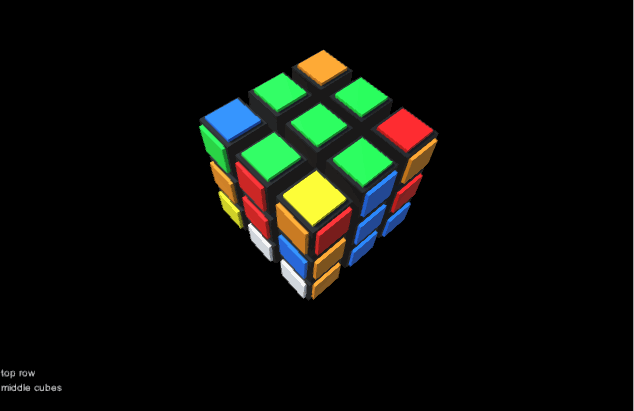


Rubiks cube flip bottom middle how to#
Even if you do finish replacing the stickers, you make solving the cube more difficult and awkward to a person who actually knows how to solve it since the colors are not in the same place in relation to each other. Peeling off the stickers is not the solution (in fact if you start to peel off some of the stickers but never finish putting the rest in their places, you are most likely going to cause an impossible combination and make the cube unsolvable). If you want to move one of the colors to another position, the other has to come too. Those two stickers will always stay next to each other. They only twist around in place, even though it looks like they change places. A corner piece will always remain a corner piece no matter how you turn the cube.Ĭenter pieces never change their position in relation to each other.

Rubiks cube flip bottom middle code#
Note: This is the code I am working with. Note: I am leaning towards the 54 element vector but am unsure how to manipulate it.Īlso, this is my first question so let me know if something is wrong (not enough info, too much, wrong topic, etc.) Is there a better/easier way to do this, different from the method my pseudocode proposes? How do I account for the face changes?Įxample: (front face, 1 turn, clockwise) 123 741 This pseudocode does not account for the face changes. Map each cube numbers 1-54, faces 1 – 4 are 1 – 36 while top face is 37 - 45 and bottom is 46 – 54ġ turn: counterclockwise = -9 loops back to 45 How would you represent a Rubik's Cube in code? Rotation Pseudocode: I am having trouble understanding how I could use any method to account for the changes on each face at once especially when taking into account the behavior of the face rotations (as opposed to the rows and columns). But which method is the most intuitive/easy to code? And more importantly, which would best fit the behavior outlined below (in the pseudocode)? I found a solution on this site referencing a paper proposing 7 different ways to do it (the link in below). I am having trouble creating/choosing an algorithm to use that would simulate the cube and all possible rotations accurately. My code has a class for facets which make a Face (another class) and then there is a cube class which contains the rotation methods. But it must simulate a 3 X 3 cube with rotation behaviors and provide a graphical representation of the cube (I'm going with a flat lettered structure). I am currently working on an assignment to build a functioning Rubik's cube.


 0 kommentar(er)
0 kommentar(er)
